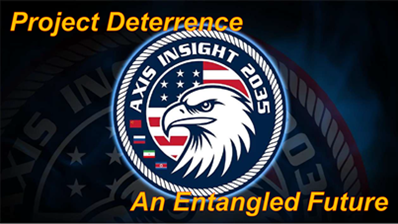[Editor’s Note: Army Mad Scientist teamed with the U.S. Army Sergeants Major Academy (SGM-A) at Ft. Bliss, Texas, in executing their annual writing contest for … Read the rest
536. Project Deterrence — An Entangled Future
[Editor’s Note: The Army’s Mad Scientist Laboratory is pleased to feature the first in a series of posts excerpting findings from Team Axis Insight 2035… Read the rest
535. Winning the Future: The U.S. Military’s Need for Technological Dominance and Defined Strategic Vision
“Agentic warfare is here, whether we welcome it or not. The era of military planners manually gathering limited data and compiling static crisis response options … Read the rest
534. The Bolt That Broke Our Helos
“At the center of Xi’s vision are what he calls China’s “new productive forces”—breakthroughs in advanced batteries, biotech, LiDAR, drones, and other emerging technologies that … Read the rest
533. How China Fights in Large-Scale Combat Operations
[Editor’s Note: The U.S. Army Training and Doctrine Command (TRADOC) released the first in its series of new publications focusing on the United States’ key … Read the rest





